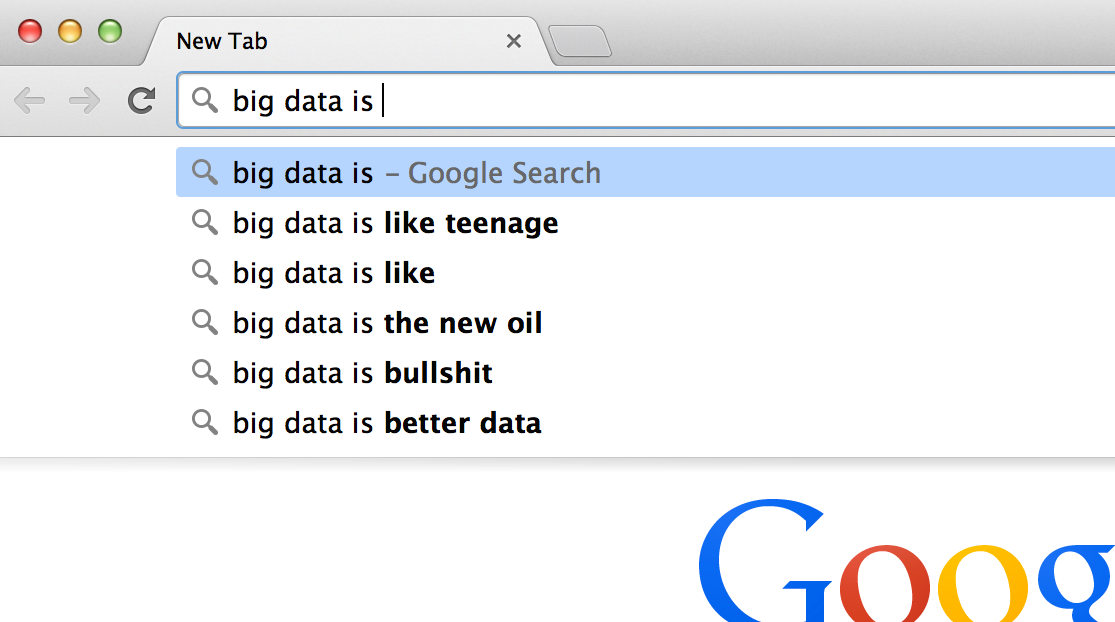
Big Data - Power in Numbers?

According to Google search ‘big data’ can refer to anything from ‘better data’ to ‘the new oil.’ As amusing as predictive search results can be, the general trend in industry opinion is that ‘bigger’ does mean ‘better’ – why and how this is the case remains to be seen.
Dan Ariely sums up this conundrum by explaining that –
“Big data is like teenage sex: everyone talks about it, nobody really knows how to do it, everyone thinks everyone else is doing it, so everyone claims they are doing it…”
Agreeing that ‘big data’ is more a buzzword than anything tangible, at least at present, there is something about the potential of huge volumes of both structured and unstructured data that gets the secret geek inside many of us rather excited. Yes, it’s difficult to process using traditional database and software techniques, but it’s the potency of potential behind the catch phrase that qualifies ‘big data’ as deserving of our obsession.
Having grappled with and marginally gripped an understanding of the term ‘big data’, there remains the question – what can big data do for us? How can we use it to draw insights and make stronger connections?
In terms of practical application, big data has the potential to allow us a better understanding of the consumer. By using large volumes of data we are able to understand the nuances and complexities within the path to purchase, to create more complex models based on this data, and therefore evolve more effective marketing and engagement strategies. Big data can also be used to compare strategies – for example, how does the effectiveness of a digital campaign compare with more traditional media campaigns within specific sectors?
The key to big data is understanding its potential to inform more customer focused marketing in order to maximise engagement and, importantly, ROI. Being able to view relationships in a complex rather than a linear fashion allows the consumer to become a true individual with a 360-degree profile.
Big data also allows us to look at how different marketing tools can work together to increase overall impact. Big data partnerships are key to unlocking big insights – for example, Nielsen is currently working with Facebook to improve online campaign ratings by analysing behavioural patterns and audience reach. The goal with linking data sets is of course to gain more informed insights.
One important point to note is big data’s ability to bring ‘real time’ learning’s – being able to track effectiveness through the course of a campaign, adjusting media planning accordingly for example, and subsequently optimising effectiveness and results. The next step is to be able to use big data to build predictive marketing models, adding future value and allowing marketers to be one step ahead of the game.
Some of us may feel slightly on edge at the thought of technology being able to predict our wants and needs and targeting us accordingly. Although there’s much to be said for a responsibility of big data not to be used to ‘expose’ the consumer, working to gain ‘anonymous impressions’ of consumer needs in order to become more relevant and therefore add more value has got to be a good thing for all concerned.
With a myriad of possibilities and boundless potential to shake up the meaning of ‘effective marketing’, big data is, if nothing else, a great example of power in numbers.